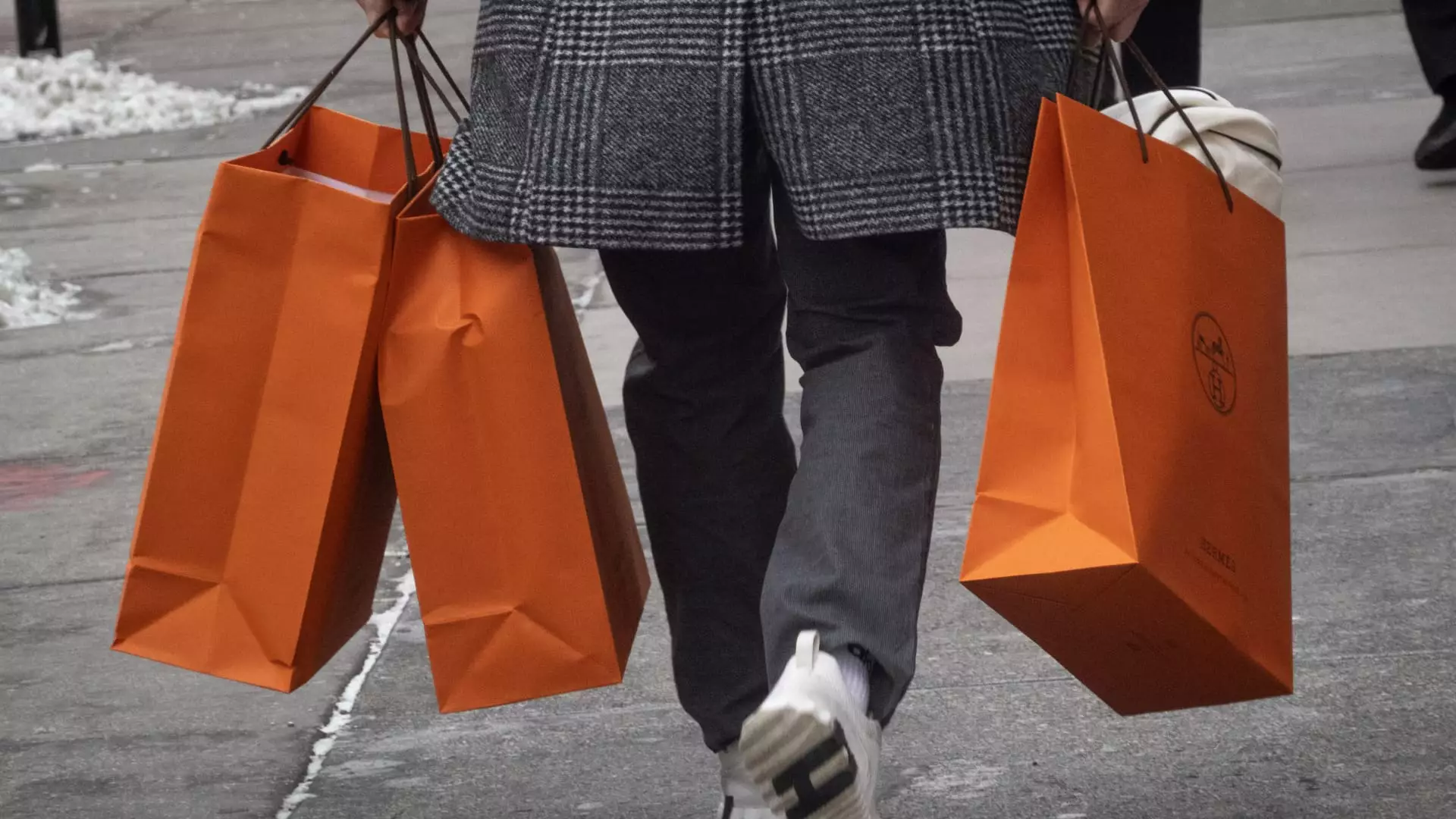The luxury fashion sector in Europe, long celebrated for its opulence and craftsmanship, is now facing significant turbulence. As the shadow of U.S. tariffs looms large, this exquisite market finds itself navigating treacherous waters that could ultimately drown its previously buoyant recovery. Current reports indicate that European giants like LVMH, Kering, and Hermes are not entirely shielded from the repercussions of international economic strife, particularly as the likelihood of a global recession climbs to a staggering 60%.
The Chill of Tariffs: A Slippery Slope
Initially, it appeared that high-end fashion houses could withstand the blows of increased tariffs. The allure of the “made-in-Europe” label seemed to insulate these brands from the fluctuations associated with tariffs on U.S. imports. However, as President Trump announced a temporary pause in tariffs, the underlying situation remained precarious. Analysts from JPMorgan and various investment firms have indicated that the potential fallout from such trade barriers could send ripples throughout the global economy, creating winds that will cut through even the most luxurious fabrics.
The move by the U.S. to impose universal tariffs of 10% might seem trivial in the grander scheme, but the psychological impact on consumer confidence can hardly be overstated. A spike in prices may stem directly from these tariffs, forcing luxury brands to make the difficult decision of passing costs onto consumers. Wealthy shoppers, typically more resilient to price increases, could feel the squeeze if the economy begins to falter. The nuances of the luxury market are complex, yet even the affluent cannot remain indifferent to a collapsing global economy.
Economic Turmoil: A Broader Perspective
The stakes have never been higher. According to Adam Cochrane from Deutsche Bank, the broader impact of the tariffs can potentially overshadow any initial effects. He suggests that while luxury brands may currently be faring a bit better than other industries, the clouds of uncertainty hanging over stock markets could severely undermine the demand for luxury goods. A wealth of economic data suggests that a downturn in consumer spending isn’t just a fleeting concern; it represents a profound threat to the sector’s long-term recovery.
Moreover, the Chinese market’s demand for luxury goods is already wavering, with newly imposed tariffs potentially exacerbating this trend. The possibility that China could react adversely to U.S. policies further threatens European luxury brands that have been relying on U.S. sales after experiencing stagnation in their home market. If the ‘American Dream’ becomes a ‘Tariff Nightmare,’ European brands might be left with dim prospects.
Market Dynamics: The Luxury Segment in Crisis
While it’s easy to view the luxury market as a fortress, the reality is far less stable. The recovery that luxury brands had been banking on has met a serious threat from heightened economic volatility. So-called “anomalies” in sales growth, as highlighted by analysts, signal a precarious environment rather than a clear resurgence. With a downgrading of luxury sector growth expectations, luxury companies must now innovate and adapt or risk irrelevance amidst changing consumer behavior and economic signals.
Despite being characterized by timeless elegance, brands like Richemont and Moncler could find themselves more adversely affected by economic shifts than their counterparts, such as Hermes and Burberry, which are more adept at weathering the storm. This disparity underscores a critical lesson: in the realm of luxury, the true value doesn’t just lie in the products but also in the brand’s ability to navigate economic adversities.
Beneath the Surface: The Psychological Battle
Ultimately, the outcome of the turmoil surrounding trade policies will reside not solely within the figures of profit margins or sales forecasts but also in the minds of consumers. The psychological ramifications of tariffs and economic uncertainty create a treacherous battleground. It is here that luxury brands must excel, leveraging their storied histories and brand loyalty to maintain consumer confidence against the gloom of recession.
While predictions vary and expert opinions abound, the consensus remains clear: the European luxury sector stands at a critical juncture. The intersection of growth potential and economic reality must be navigated delicately. As the clock ticks away on recovery, brands are left wondering whether they can transcend the immediate impacts of rising costs and recession fears to secure a sustainable future in their realm of elegance and prestige. Only time will tell if the allure of luxury can withstand the dizzying complexities of a global economic crisis.


Leave a Reply